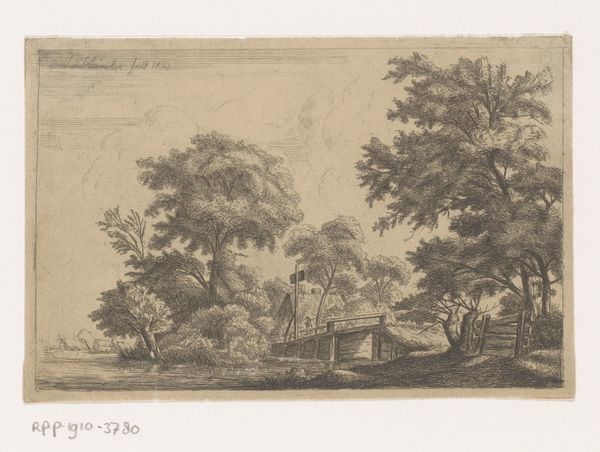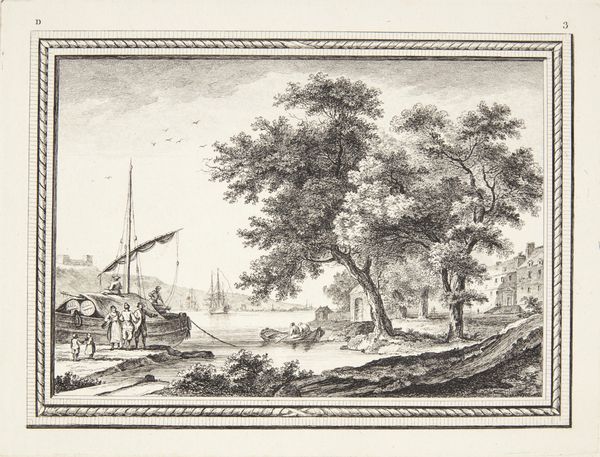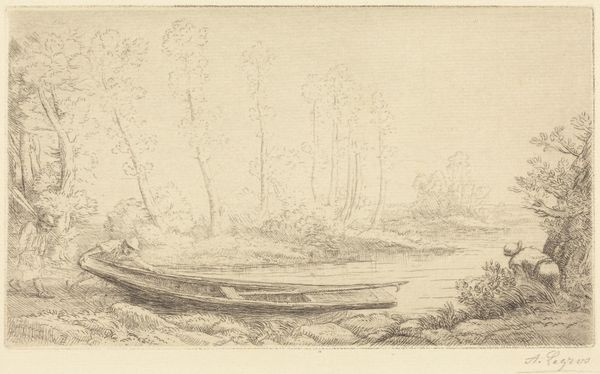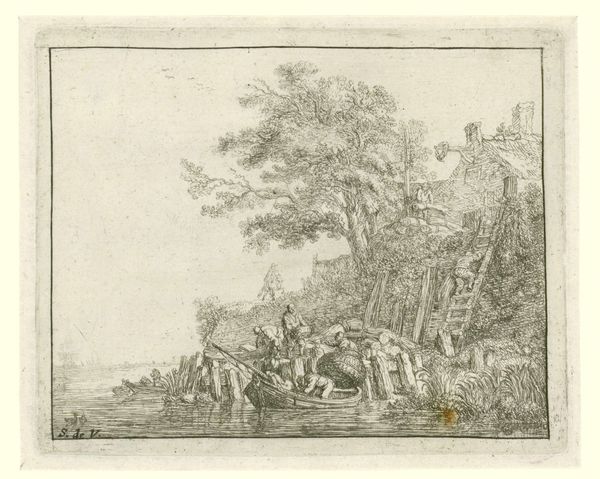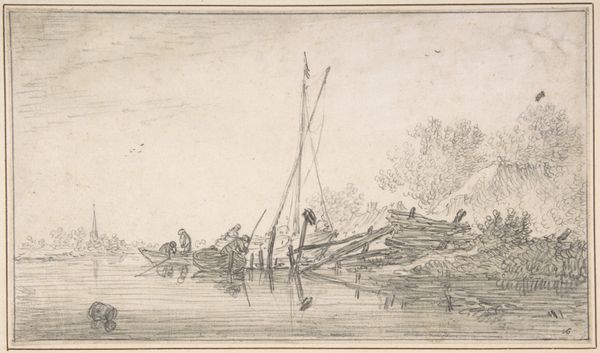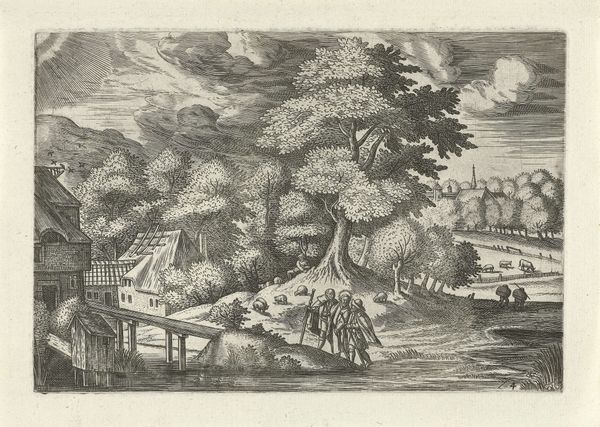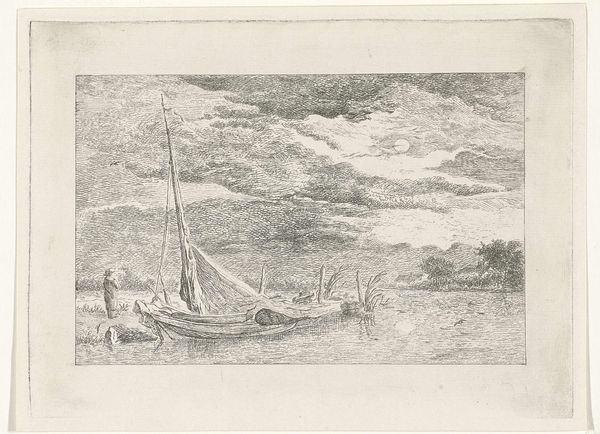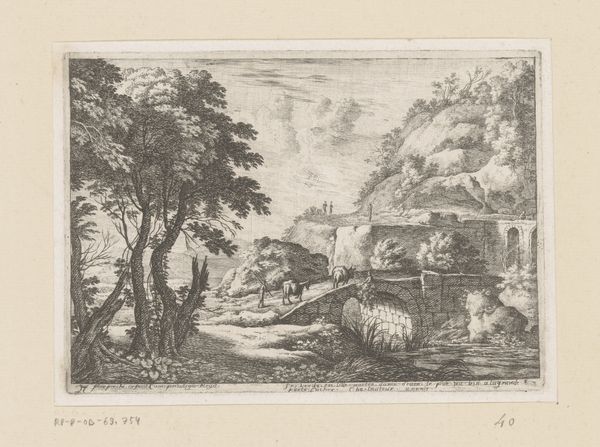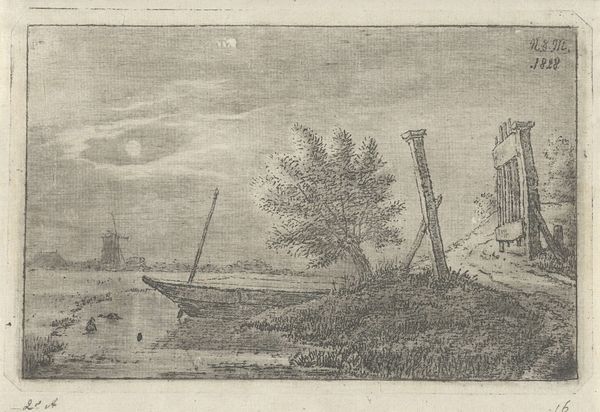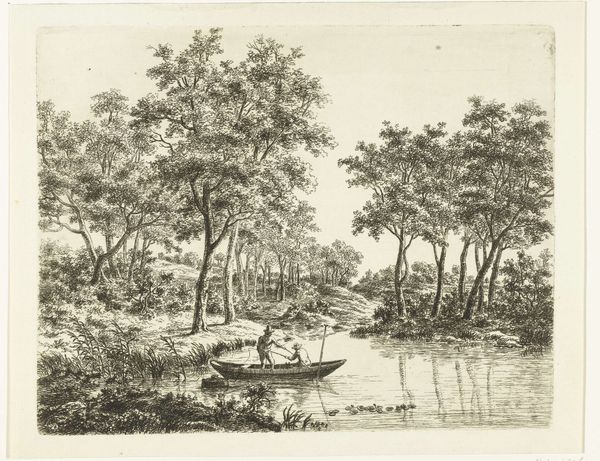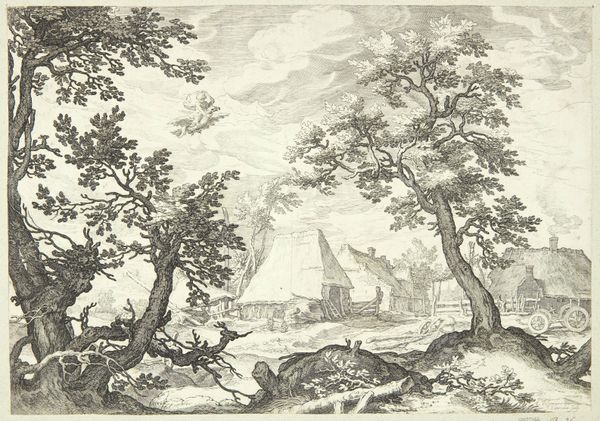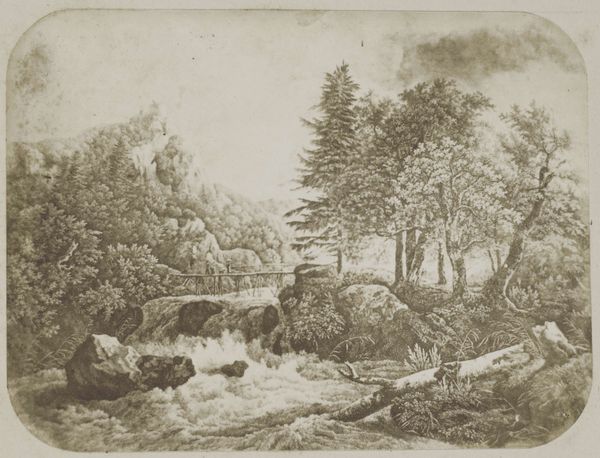
drawing, paper, engraving
#
drawing
#
light pencil work
#
pen sketch
#
pencil sketch
#
landscape
#
paper
#
personal sketchbook
#
sketchwork
#
romanticism
#
pen-ink sketch
#
pen work
#
sketchbook drawing
#
pencil work
#
genre-painting
#
sketchbook art
#
engraving
Dimensions: height 127 mm, width 152 mm
Copyright: Rijks Museum: Open Domain
Curator: Philippus Velijn created this artwork, entitled "Landscape with a Wooden Bridge over a Waterfall," sometime between 1797 and 1836. It’s currently housed here at the Rijksmuseum. What strikes you first about it? Editor: You know, it’s funny. At first glance, it looks almost idyllic, like some peaceful rustic scene. But then I notice the figures are quite small, almost dwarfed by the immensity of nature itself, and the bridge, precarious and spindly, against the roaring water...suddenly feels quite unsettling. Like nature could reclaim it all in an instant. Curator: Precisely. The composition places that delicate, man-made structure—that bridge and the associated habitation—within a scene dominated by powerful natural elements. Observe the engraving’s light pencil work—that technique emphasizes this contrast and allows Velijn to articulate gradations of tone with impressive control. The detail of the trees alone shows great attention. Editor: Right! And how that little puff of smoke rising from the dwelling mimics the shape of the clouds… it’s subtle, but it's there! To me, it hints at the way humanity tries to mirror nature, to carve out its own little corner. Yet, we are just echoes—or, maybe shadows—within a much larger drama, dwarfed and always in the thrall. What would you say the style might be? Curator: Elements such as the sublime rendering of nature and focus on an imagined idealized past connect the work to the Romantic tradition. The use of delicate line work, crosshatching, and stippling techniques serve not merely to depict, but also to evoke a certain mood—a kind of nostalgic longing or gentle melancholy, in contrast to earlier Neoclassical formality. Editor: Melancholy, yes! It's the quiet kind, though. The figures on that bridge... are they working? Playing? They're frozen in a tiny tableau within this larger spectacle. A reminder, perhaps, of our own fleeting presence? Or maybe even a memento mori of our own mortality in a world far more significant than we could dream up. Curator: Your reading underscores a critical point. While outwardly charming, the work presents nature as both provider and potential destroyer. We have the benefit of distance and time to aid analysis. This landscape encapsulates a tension inherent in the Romantic project. Editor: It is true; perhaps time affords some unique lens to these details that might have passed observers in prior times. Thank you for highlighting some more crucial elements that help ground an interpretation.
Comments
No comments
Be the first to comment and join the conversation on the ultimate creative platform.

